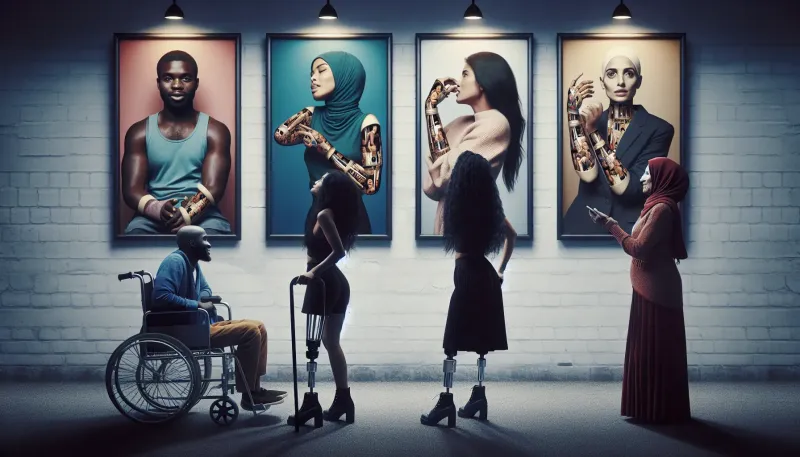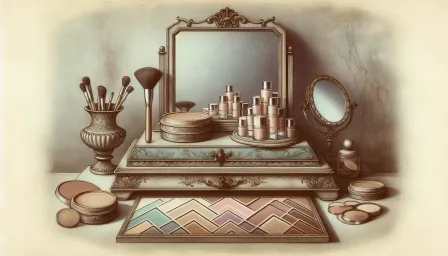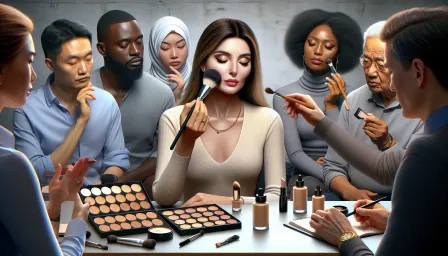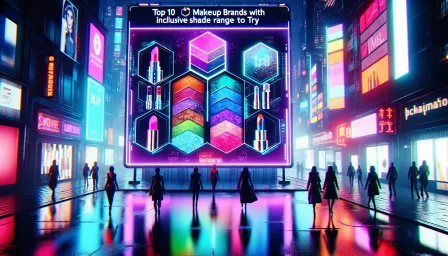The Impact of Beauty Standards and Disability Representation on Society

An in-depth exploration of the impact of beauty standards and disability representation on society. Understand the challenges and find potential solutions.
Beauty standards have long played a significant role in shaping societal perceptions and attitudes. Coupled with the representation of disability in media and culture, these standards create a complex narrative that influences how individuals view themselves and others. This article explores the profound effects of beauty standards and disability representation on society, the challenges faced by those who fall outside these norms, and potential solutions for fostering a more inclusive world.
Understanding Beauty Standards
Beauty standards are societal benchmarks that dictate what is considered attractive or desirable. These standards vary across cultures and eras but often include criteria related to physical appearance such as body shape, skin tone, and facial features. Unfortunately, mainstream media and advertising heavily promote a narrow range of these standards, often excluding individuals who do not fit the mold.
The Historical Context of Beauty Standards
Ancient Civilizations
In ancient civilizations, beauty standards were distinct to each culture. For instance, ancient Egyptians valued slender figures and symmetrical facial features, while the Greeks idealized athletic bodies. These standards were often depicted in art and sculpture, reflecting the society's ideals.
Modern Influences
The advent of mass media in the 20th century significantly influenced beauty standards. Icons like Marilyn Monroe and Twiggy set trends that defined the era's beauty ideals. Today, social media platforms perpetuate these standards, with influencers and celebrities often showcasing an idealized, and sometimes unattainable, version of beauty.
The Impact of Beauty Standards on Society
The pervasive nature of beauty standards has several societal implications:
Mental Health
The pressure to conform to beauty standards can lead to significant mental health issues such as anxiety, depression, and low self-esteem. Individuals, especially young women, often internalize these ideals, feeling inadequate if they do not measure up.
Body Image Issues
Body image dissatisfaction is prevalent, driven by constant exposure to unrealistic beauty ideals. This dissatisfaction can result in eating disorders, excessive dieting, and a negative relationship with one's body.
Discrimination
Beauty standards often lead to discrimination, where individuals who do not conform to these standards experience bias in various aspects of life, including employment, social interactions, and the media.
Disability Representation in Media
Disability representation in media is crucial for building an inclusive society. Historically, individuals with disabilities have been underrepresented or misrepresented, reinforcing stereotypes and marginalizing this group.
Historical Misrepresentation
Early depictions of disability in media often portrayed individuals with disabilities as objects of pity, villainy, or comic relief. These stereotypes contributed to societal stigma and the belief that people with disabilities are defined solely by their impairments.
Modern Representation
There has been progress in recent years, with more authentic and diverse portrayals of disability in film, television, and advertising. Shows like "Atypical" and "Special" and movies like "The Theory of Everything" have brought attention to the lived experiences of people with disabilities, highlighting their strengths and challenges.
The Intersection of Beauty Standards and Disability Representation
The intersection between beauty standards and disability representation creates unique challenges. Individuals with disabilities often face double standards, where they are judged not only by their disabilities but also by how they fit into prevailing beauty norms.
Exclusion from Beauty Standards
Many beauty standards exclude people with disabilities, perpetuating the notion that they cannot be considered attractive. This exclusion reinforces negative stereotypes and further marginalizes this community. Representation in media rarely includes people with disabilities as symbols of beauty, reinforcing the idea that they are outside the norm.
Role Models and Representation
Positive representation of individuals with disabilities who defy beauty standards can serve as powerful role models. Figures like model and activist Jillian Mercado and athlete Amy Purdy challenge traditional beauty norms and inspire others to embrace their unique beauty.
Solutions for Change
Addressing the impact of beauty standards and disability representation requires concerted efforts across societal, cultural, and individual levels. Here are potential solutions:
Promoting Diversity in Media
Media companies should prioritize diverse and authentic representation of all body types, skin tones, and abilities. This can be achieved by including models and actors with disabilities in advertising campaigns and storytelling that showcases their experiences without reducing them to their disabilities.
Educational Initiatives
Education systems should incorporate curricula that challenge traditional beauty standards and promote body positivity. This includes teaching about the diversity of human bodies and abilities, encouraging students to appreciate all forms of beauty.
Social Media Advocacy
Individuals and advocacy groups can use social media to challenge and change beauty standards. Campaigns like #BodyPositivity and #DisabilityPride foster communities that celebrate diversity and inclusivity, providing platforms for voices that are often marginalized.
Conclusion
The impact of beauty standards and disability representation on society is profound and multifaceted. These standards influence how individuals perceive themselves and others, contributing to mental health challenges, body image issues, and discrimination. However, with intentional efforts to promote diversity and inclusion in media, education, and social advocacy, society can move toward a more inclusive and accepting world where all forms of beauty are recognized and celebrated.
By addressing these issues head-on, we pave the way for a future where everyone, regardless of their appearance or abilities, can feel valued and seen.



























